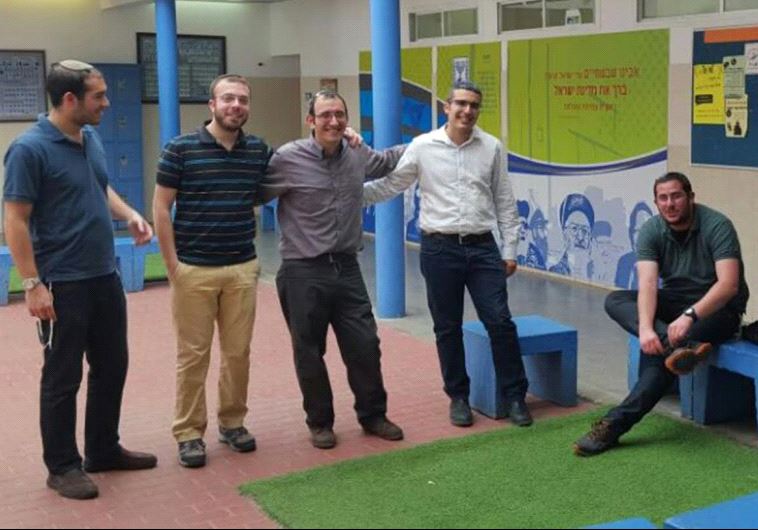Six students return as teachers to their former high school
So beloved is the school among its pupils that six of its 60 teachers spent time there as students and decided to return later in life as teachers.
 From right to left: Evyatar Greenboim, Shay Hizkiya, Tomer Schupper, Yaakov Shasho, and Hemi Carmiel.Updated:
From right to left: Evyatar Greenboim, Shay Hizkiya, Tomer Schupper, Yaakov Shasho, and Hemi Carmiel.Updated: